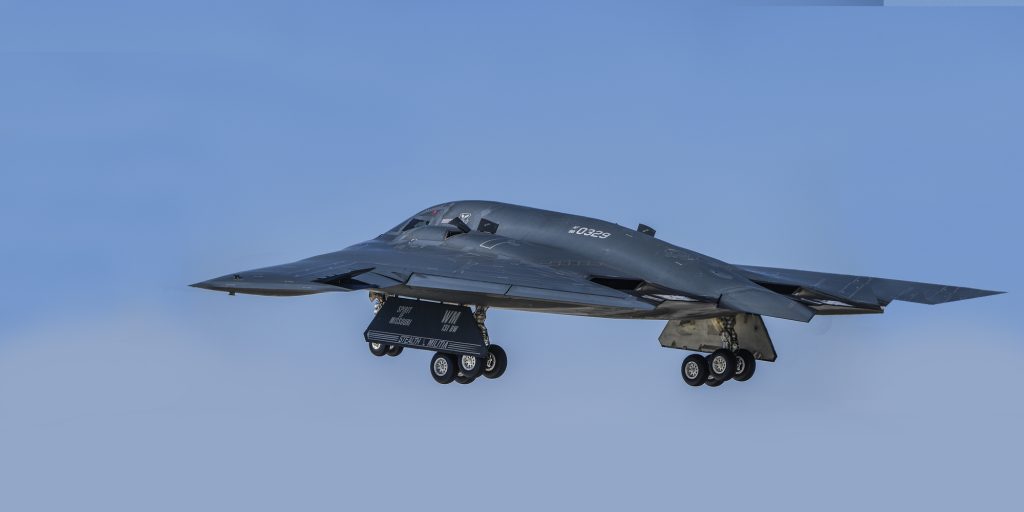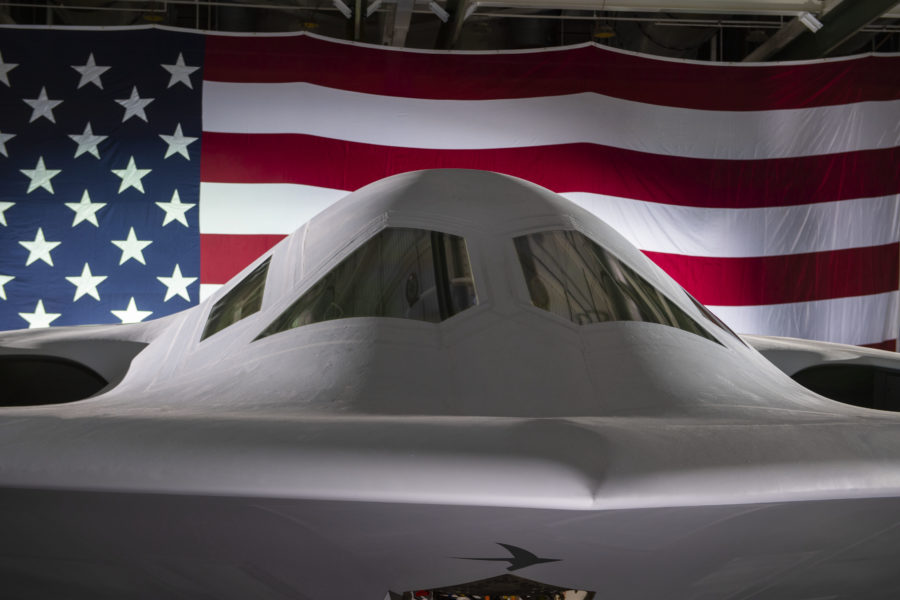A new photograph of the B-21 bomber circulating on the internet in the last few days—and the first to reveal what the back of the secret aircraft looks like—shows a different geometry for the aircraft’s exhaust area and rear deck from its predecessor, the B-2.
The moderate-resolution photo, posted to Reddit by a user named “u/Mug_Of_Fire” and apparently taken through a fence, shows a B-21 conducting an outside engine test. Its appearance prompted media queries to the Air Force, which acknowledged that taxi tests with the secret stealth bomber are now underway.
An Air Force official, speaking on background as to the image’s authenticity, confirmed “that is a B-21.”
Air & Space Forces Magazine reached out to “u/Mug_Of_Fire,” to establish how and when the photo was taken and did not receive an immediate response. The B-21 is undergoing taxi tests at Northrop Grumman’s facilities at Air Force Plant 42 in Palmdale, Calif.
This is the first look at the new B-21 Raiders rear-end.
byu/Specialist-Ad-5300 inaviation
The light gray aircraft in the image is clearly not a B-2, having different landing gear and lacking the “sawtooth” rear area shaping of that bomber.
The principal revelation from the rear-view image is that the B-21’s exhausts are rounded and hooded/scallop-shaped; similar to but flatter than the air intakes on the B-2, and very unlike that aircraft’s boxy slot exhausts.
Although the angle of the image makes it hard to say for sure, there appears to be a lengthy flat deck behind the exhausts, ending in a slightly upturned tail point. Shadows at the rear of the center “fuselage” of the flying wing bomber seem to confirm this. The exhausts clearly don’t come all the way to the trailing edge of the aircraft, as they have been portrayed in many artist’s speculations.
Nothing about the configuration reveals whether the B-21 has two engines or four, a characteristic the Air Force has so far refused to discuss. The engines are made by RTX’s Pratt & Whitney, but the exact type has never been discussed.
Heat plumes emanating from the back of the aircraft also seem to disperse upwards, rather than straight back, further indicating the presence of an extended deck behind the exhausts. That would be consistent with efforts to attenuate the bomber’s heat signature.
In the image, control surfaces along the trailing edge are deflected or relaxed, in all areas except the tail point, which does not appear to be articulated. That suggests the B-21 may not have the “beavertail” feature on the B-2.
The “beaver tail” on the B-2—specifically the Gust-Load Alleviation System, or GLAS—was intended to give the B-2 more lift and help it get off the ground more quickly in case of a nuclear attack sending blast across the runway. A former B-2 pilot said this control surface was not considered useful and became an almost vestigial feature, not included as part of the integrated flight control system.

Videos of B-2 control surfaces being deflected as part of a preflight check don’t show the beavertail moving. It’s possible the beavertail was deleted from the B-21 given the operational experience with the B-2. Doing so would strengthen the area and eliminate seams, which are the toughest element of the otherwise glass-smooth aircraft to make stealthy.
Each wing on the B-21 has two flaperons, while there appears to be a single flaperon along each side of the tail. The image also confirms the “kite” planform of the B-21, in that it lacks the “sawtooth” trailing edge of the B-2.
The original design of the B-2 called for a planform much like that on the B-21, but a late-add requirement for the aircraft to fly low-level required the addition of the “sawtooth” tail; a redesign that added several years and several billions to the B-2’s development. Lacking those features, the B-21 seems optimized for high-altitude work.
The wingtips indicate a slight anhedral, or downward angle, but the quality of the image makes it difficult to say whether this is simply a factor of the higher camber of the wing versus that of the B-2. Both the B-2 and B-21 must have very stiff wings to remain stealthy, so there should be no wing droop when wing fuel tanks are full.
Weapons bays do not appear to be open in the image.
An unexplained feature visible in the photo is a different-colored patch on the aircraft’s upper port wing root. This is not a shadow, as that part of the aircraft is in direct sunlight. Aircraft experts were unable to speculate on what this different-colored patch might be.
As the B-21 is now nearing first flight—which the Air Force and Northrop say will occur before the end of the year—high-speed taxi tests will soon be underway on Plant 42’s runway. At that point, more detailed photos will likely become available.
